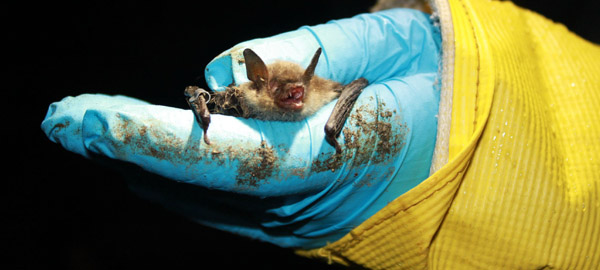Bats and Rabies
Rabies is a preventable viral infection of the central nervous system in mammals. The virus is typically transmitted by the bite of an infected animal. People can, in rare instances, contract rabies if infectious material, such as saliva, from a rabid animal gets into their eyes, nose, mouth or a wound. You cannot get rabies from just seeing a bat, from simply being in a room with a bat or from contact with bat guano (feces), urine or blood. And the vast majority of bats do not have rabies.
No subject has generated more misinformation and fear about bats than rabies. So let’s look at the facts. Worldwide, more than 55,000 people are estimated to die of rabies each year (World Health Organization), primarily from contacts with rabid dogs. In industrialized countries, most dogs and cats are now vaccinated against rabies, and the disease is rare in humans and usually results from contact with rabid wildlife, particularly bats. In the United States from 1995 through 2009, an average of two people per year have died of rabies associated with bats.
With proper education, the presence of bats does not pose public health conflicts. For example, approximately 1½ million Mexican free-tailed bats live under the Congress Avenue Bridge in downtown Austin, Texas. A well-publicized tourist attraction, the bridge bats attract tens of thousands of people each summer to watch the bats emerge in the evenings on their nightly insect hunts. No human case of bat-transmitted rabies has ever been recorded in Austin or surrounding communities.
Rabies is readily prevented by post-contact vaccination, but is almost always fatal after symptoms appear. Prompt medical advice is essential following a bite by a bat or other animal. If the bat can be safely captured (as in a box or can), it should be sent to a laboratory for testing. People usually know when they’ve been bitten, but bats have small teeth and bite marks may not be apparent. If you find a bat in the room of an unattended child or near a mentally impaired or intoxicated person, seek medical advice.


